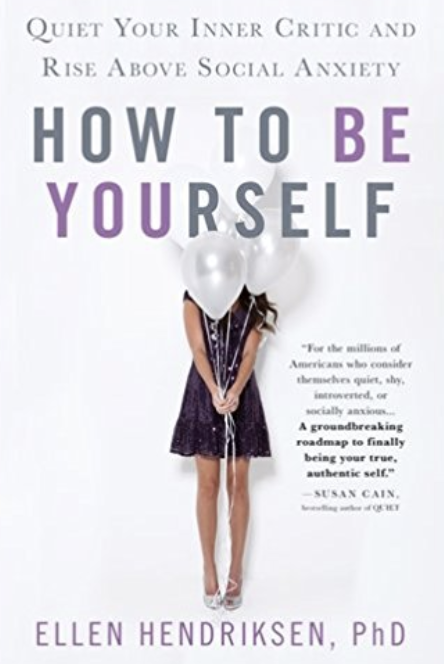To demonstrate the power of mindfulness on social anxiety, a 2011 study trained folks with capital-S Social Anxiety for just ten minutes in either mindfulness, distraction (paying attention to something unrelated to the task at hand), or nothing at all.
The mindfulness training taught participants to focus on their breath and to gently bring their mind back when it wandered away (as minds tend to do—indeed, when you first try to be mindful, you will find your ability to focus falls somewhere on the spectrum between “untrained puppy” and “toddler”). In the study, the instructions to the mindful group concluded, “The purpose is to be aware of your thoughts and feelings and accept your experience in the present moment.”
After the training, participants were put to the test. They were asked to remember a recent experience where they felt really anxious, awkward, or embarrassed in a social situation like a party, meeting, presentation, or date. They were instructed to bring it to mind as vividly as possible and then were left alone to stew in the juices of their humiliating memory for five minutes. The participants rated how upset they were and then applied their new thinking strategy—mindfulness, distraction, or nothing—for five more minutes and again rated how upset they were. As you might guess, mindfulness won out. In the mindfulness group, distress went down steadily and significantly over the five minutes. In the distraction group distress didn’t go down at all, and in the control group it actually went up. And remember, this was after just ten minutes of training.
If you’re a beginner, here are three mindfulness exercises to try, each of which only takes a few minutes.
5-4-3-2-1. This is a use-anywhere little exercise that can pull you out of worry and ground you in reality. Here’s how to do it: Work your way through your five senses. First, look around and name five things you can see. For me, I see my laptop, a mug of Earl Grey tea, an ornery printer, a stack of blue sticky notes, a biography of Albert Ellis. Next, name four things you can hear—a car outside, a bird chirping, the neighbor’s air conditioner, water running somewhere. Next, three things you can touch—my feet in my shoes, my back against my chair, the keyboard keys against my fingers. Two things you can smell—the aroma of the tea, the musty smell of the biography. And finally, one thing you can taste—for me, I take a slurp of Earl Grey, but if there’s nothing at hand you can simply pay attention to how your mouth tastes (generally gross) or, alternatively, say one nice thing about yourself (never gross). Why do this? First, grounding yourself in your senses brings you back to the here and now. If you’re anticipating, 5-4-3-2-1 reels you in from the future; if you’re ruminating, it gently shepherds you back from the past. Second, the countdown from five to one and working your way through your senses forces your brain to keep track, which pokes a stick in the spinning spokes of your worry wheels.
Mindful listening. This is a good one for the “nonjudgmental” part of the definition. Simply listen to whatever’s happening around you. The din of a coffee shop, the hum of highway traffic, the quiet rustling of a library. Allow yourself to listen to every sound without responding. If your mind starts making a grocery list or playing back laundry detergent jingles, just bring it back to the sounds around you. Tune in to what you’re hearing in the moment.
The classic: mindful breathing. The tried-and-true peanut butter and jelly of mindfulness is mindful breathing. Pay attention, on purpose, to your breath. Feel the air enter your nostrils. Note how it feels cool against the inside of your nose. Forget any “in for four counts, out for six” nonsense. Just breathe. Feel your torso expand, and then feel it contract as you breathe out. Notice that the air is warm as it leaves your nose. Then do it again. If your mind has the discipline of a cornered weasel, don’t despair—the opportunities to be mindful of your breath last, oh say, a lifetime. These are three, but there are a zillion other exercises and meditations you can try. Remember that sense of, Oh, I’m watching a movie, and use it to watch a flower, a raisin, or, crucially, your anxious thoughts. As self-compassion researcher, Dr. Kristin Neff of the University of Texas says, “You can’t heal what you can’t feel.” No matter what you choose, simply pay attention, on purpose, without judgment.

From How to Be Yourself by Ellen Hendriksen, Ph.D. Copyright © 2018 by the author and reprinted by permission of St. Martin’s Press.


